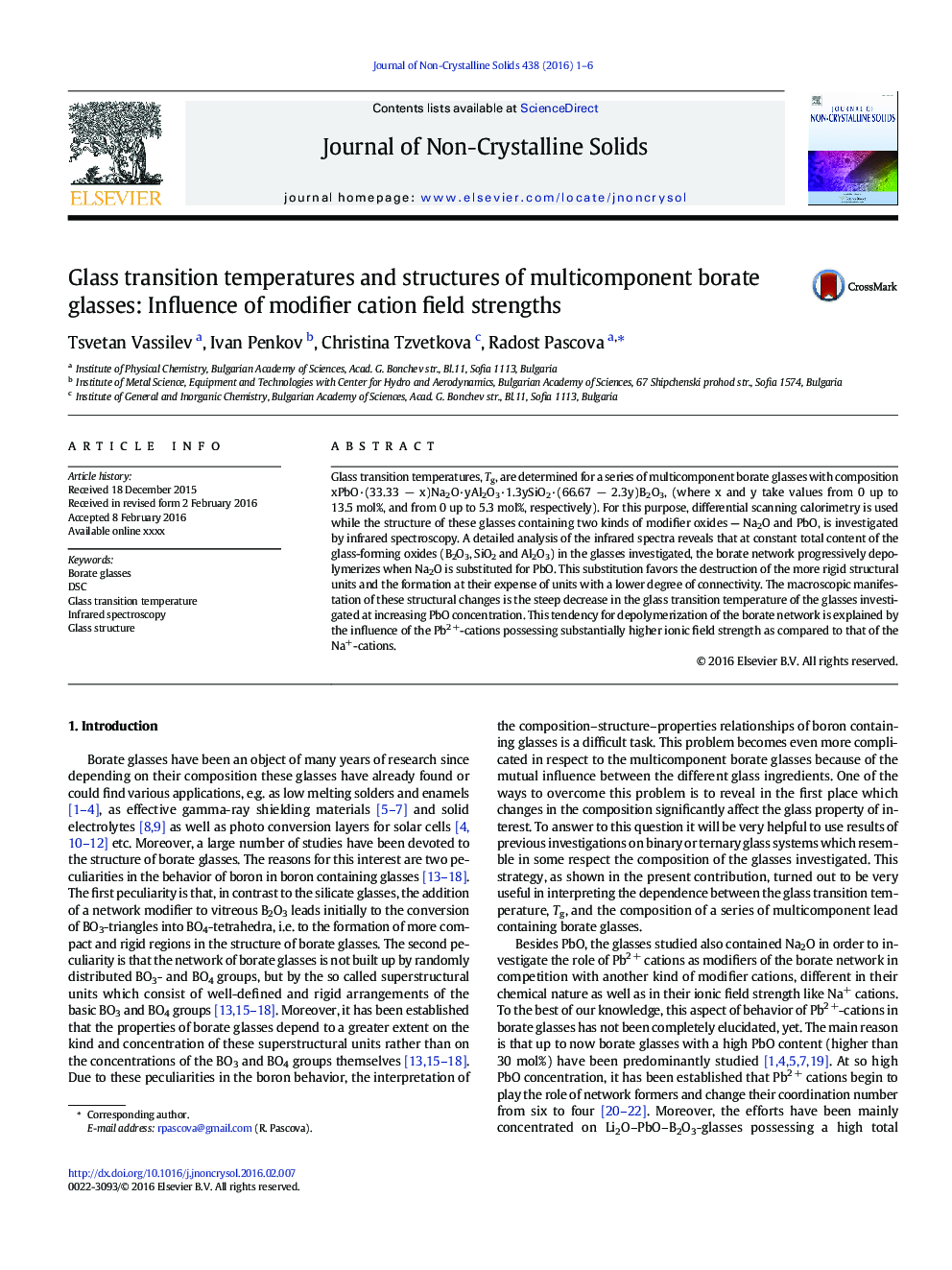| Article ID | Journal | Published Year | Pages | File Type |
|---|---|---|---|---|
| 7900734 | Journal of Non-Crystalline Solids | 2016 | 6 Pages |
Abstract
Glass transition temperatures, Tg, are determined for a series of multicomponent borate glasses with composition xPbO·(33.33 â x)Na2O·yAl2O3·1.3ySiO2·(66.67 â 2.3y)B2O3, (where x and y take values from 0 up to 13.5 mol%, and from 0 up to 5.3 mol%, respectively). For this purpose, differential scanning calorimetry is used while the structure of these glasses containing two kinds of modifier oxides - Na2O and PbO, is investigated by infrared spectroscopy. A detailed analysis of the infrared spectra reveals that at constant total content of the glass-forming oxides (B2O3, SiO2 and Al2O3) in the glasses investigated, the borate network progressively depolymerizes when Na2O is substituted for PbO. This substitution favors the destruction of the more rigid structural units and the formation at their expense of units with a lower degree of connectivity. The macroscopic manifestation of these structural changes is the steep decrease in the glass transition temperature of the glasses investigated at increasing PbO concentration. This tendency for depolymerization of the borate network is explained by the influence of the Pb2 +-cations possessing substantially higher ionic field strength as compared to that of the Na+-cations.
Related Topics
Physical Sciences and Engineering
Materials Science
Ceramics and Composites
Authors
Tsvetan Vassilev, Ivan Penkov, Christina Tzvetkova, Radost Pascova,
